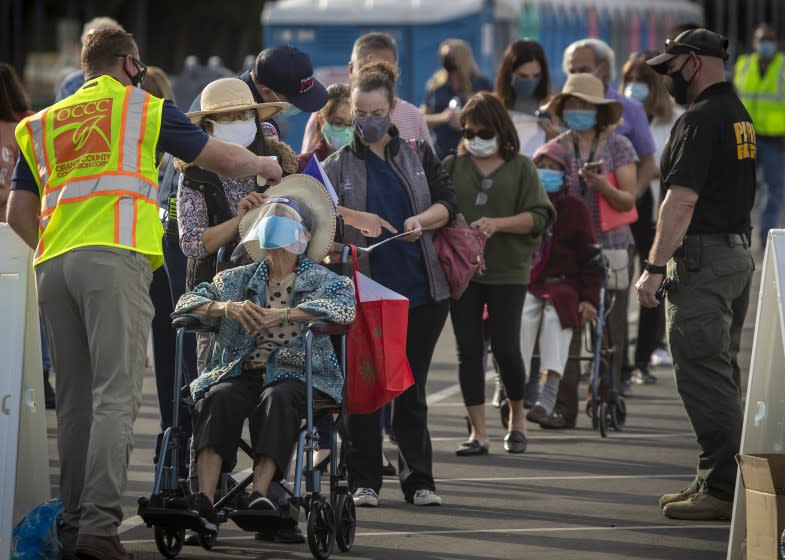Editorial: A single dose of COVID vaccine may help, but it's not sufficient

The all-important push to vaccinate Americans against COVID-19 faces a true dilemma: Two doses are required for the vaccines available right now. But because Americans — like people in many countries — would not refrain from holiday gatherings and keep their masks on, cases are surging higher than they’ve ever been. A single dose of vaccine would provide significant protection, but it’s not enough for long-term immunity.
The federal government had initially held back millions of doses of the Pfizer-BioNTech and Moderna-National Institutes of Health vaccines to ensure there were enough for second helpings for the initial recipients, who've mainly been healthcare workers and nursing home residents. But it abandoned that strategy in late December and plowed through the reserves, according to the Washington Post — though federal officials didn't share that fact with the states. Instead, they announced last week that they would release the national stockpile of COVID-19 vaccines so that more people could get a first dose, without revealing that the stockpile was empty.
This change of plan was based on officials’ belief that the drugmakers could produce enough vaccine for everyone to receive second doses as recommended, which would be three to four weeks after the first dose. (The vaccines range from fairly effective to very effective after a single shot, at least for a while, depending on which one is used.) It’s a reasonable gambit when so many are falling ill and dying, but it’s not without risks.
If states can't collect and distribute the second doses to their residents in time, we don't know what that might mean for the vaccines' effectiveness. None of the clinical trials included an extended time between doses; in other words, no one knows whether people would be as protected if they had to wait extra weeks for the second dose. Though more spread-out shots work for other viruses, these two vaccines use an entirely novel mechanism. Would the protection last long enough for the second dose and would the two together work as well? Quite possibly. Or not.
There are other concerns if the second doses don’t come through fast. One is that people will be less likely to show up for the follow-up if there’s a longer time period between shots.
“If people do not truly know how protective a vaccine is, there is the potential for harm because they may assume that they are fully protected when they are not, and accordingly, alter their behavior to take unnecessary risks,” the Food and Drug Administration said in a statement this month.
Another possibility: People's trust in the vaccine may erode. Many Americans are still reeling from revised and sometimes contradictory messages that came from federal authorities about masks and other pandemic-related issues; now the message on vaccination is changing as well.
The Pfizer vaccine, which hasn’t been tested for how well it works after just one dose, has been estimated to be a little more than 50% effective at that level — about the same level as many flu vaccines — though some people theorize its actual effectiveness would be much higher. The Moderna vaccine, using the same approach as Pfizer’s, is highly effective, about 85% to 90%, at one dose. Effectiveness is closer to 95% with both doses if they’re given within the recommended window.
Failure to get a second dose, or to get it within a reasonable time, raises another concern among health experts: If the vaccine is effective enough to keep a person from having symptoms but not effective enough to completely fight off the novel coronavirus, partly vaccinated people could act as the incubators for a mutated, vaccine-resistant virus.
Regardless, the current surge left health authorities without much choice. Using all those doses to give one shot to as many Americans as possible represents a real opportunity to save lives now and bring down COVID-19 infection rates for the population as a whole, versus theoretically causing problems down the line.
Getting the vaccines rolling out will require a faster, more effective procedure to distribute the shots than California and most other states have managed so far. But it also means better public education to avoid a situation in which millions of people are walking around only partly vaccinated. The second shot is crucial, and Americans will need to be reminded of this repeatedly.
This story originally appeared in Los Angeles Times.

 Yahoo News
Yahoo News 
